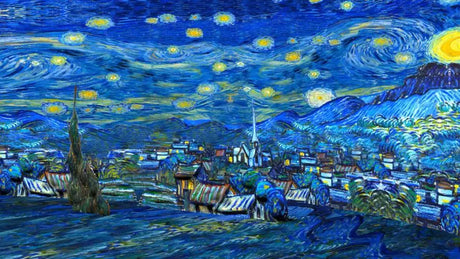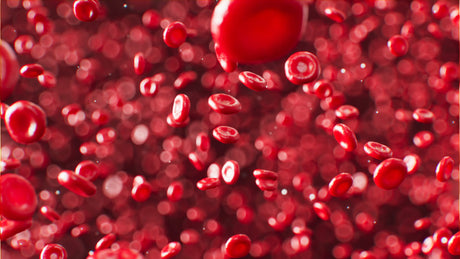Post-workout muscle soreness and fatigue can derail even the most dedicated fitness routines. Whether you’re an athlete or a casual gym-goer, achieving quicker recovery is essential for consistent progress. One innovative solution gaining momentum is red light therapy for muscle recovery after gym workouts. With roots in space-age technology and now a staple in modern sports science, red light therapy could be the key to faster recovery, less soreness, and better performance.
What is Red Light Therapy?
Red light therapy (RLT), also known as low-level laser therapy (LLLT) or photobiomodulation, involves exposing the body to specific wavelengths of red and near-infrared light. Historically, NASA first explored this technology to promote wound healing in astronauts. Today, it’s widely used in sports medicine, physical therapy, and wellness industries.
How Red Light Therapy Works on a Cellular Level
At the core of red light therapy’s effectiveness is its interaction with the body’s cells, particularly the mitochondria, which are known as the cell’s powerhouses.
Cellular Energy Boost
Red and near-infrared light penetrate deep into muscle tissues, stimulating mitochondria to produce more adenosine triphosphate (ATP)—the energy currency of cells. Increased ATP supports faster muscle repair and regeneration after intense workouts.
Reduced Inflammation and Oxidative Stress
RLT reduces oxidative stress and inflammation by modulating the immune response. This is crucial for recovery, as inflammation is often a leading cause of prolonged soreness and delayed healing.
Benefits of Red Light Therapy for Gym Enthusiasts
Faster Muscle Recovery
One of the most lauded benefits of red light therapy for muscle recovery after gym workouts is the significant reduction in recovery time. Studies have shown that RLT can decrease muscle fatigue and accelerate the repair of damaged muscle fibers, allowing individuals to return to their workouts sooner.
Reduction in Muscle Soreness (DOMS)
Delayed Onset Muscle Soreness (DOMS) can make post-exercise days unbearable. Red light therapy alleviates DOMS by increasing blood flow and reducing inflammation, resulting in less discomfort and stiffness.
Enhanced Muscle Performance
With regular use, athletes have reported improvements in:
- Muscle strength
- Flexibility
- Endurance
This makes red light therapy not just a recovery tool but a performance enhancer.
Scientific Evidence Supporting Red Light Therapy
Numerous clinical studies back the effectiveness of red light therapy. A study published in the Journal of Athletic Training found that athletes using RLT post-workout experienced significantly less muscle soreness and recovered strength faster than those who didn’t.
Additionally, research in Lasers in Medical Science highlights that RLT improves muscle recovery by:
- Boosting collagen production
- Enhancing angiogenesis (formation of new blood vessels)
- Reducing muscle fatigue markers like creatine kinase
Comparing Red Light Therapy to Traditional Recovery Methods
| Method | Benefits | Limitations |
|---|---|---|
| Ice Baths | Reduces inflammation | May impair muscle growth |
| Massages | Relaxes muscles | Time-consuming, expensive |
| Stretching | Enhances flexibility | Less effective for soreness |
| Red Light Therapy | Speeds up cellular repair | Requires device investment |
While traditional methods are useful, red light therapy offers a science-backed, non-invasive alternative with holistic benefits.
Best Practices for Using Red Light Therapy Post-Workout
Frequency and Duration
- Frequency: 3-5 sessions per week
- Duration: 10-20 minutes per session
- Distance from Skin: 6-12 inches for optimal exposure
Home Devices vs Professional Clinics
| Home Devices | Professional Clinics |
|---|---|
| Affordable in the long run | Higher upfront session costs |
| Convenient & accessible | Supervised by experts |
| Varying power & quality | Clinical-grade equipment |
Common Misconceptions About Red Light Therapy
-
Myth: It’s just a placebo.
-
Fact: Multiple peer-reviewed studies confirm its physiological impact.
-
-
Myth: Red light therapy burns the skin.
-
Fact: It’s non-thermal and pain-free.
-
-
Myth: Only elite athletes benefit.
-
Fact: Suitable for anyone engaging in physical exercise.
-
Potential Side Effects and Safety Concerns
While red light therapy is generally safe, overuse or improper device handling may lead to:
- Skin sensitivity
- Temporary redness
- Eye strain (always use protective eyewear)
Pregnant women and individuals with certain photosensitive conditions should consult healthcare providers before use.
How to Choose the Right Red Light Therapy Device
Key Features to Consider:
-
Wavelength: 660nm (red) & 850nm (near-infrared)
-
Power Output: At least 100mW/cm²
-
Safety Certifications: FDA-approved models
Recommended Brands and Models (2025):
- Joovv Solo 3.0
- PlatinumLED Therapy Lights
- Elvish E300
- Mito Red Light
These brands balance affordability, power, and safety.
Frequently Asked Questions
1. How soon can I see results from red light therapy?
Most users notice reduced soreness and better recovery within 2-3 weeks of consistent use.
2. Is red light therapy safe for daily use?
Yes, when used according to guidelines, it is safe for daily sessions.
3. Can red light therapy replace other recovery methods?
It complements traditional recovery methods but should not entirely replace stretching or proper nutrition.
4. How long should each session last?
Optimal exposure is between 10-20 minutes per muscle group.
5. Does it help with joint pain too?
Yes, red light therapy has been shown to reduce joint pain and stiffness.
6. Where can I buy a reliable red light therapy device?
Reputable brands are available on Amazon, the official brand websites, and wellness stores.
Conclusion: Is Red Light Therapy Worth It for Muscle Recovery?
If you’re seeking a non-invasive, scientifically backed method to enhance your muscle recovery after gym workouts, red light therapy is a game-changer. By accelerating cellular repair, reducing inflammation, and boosting performance, it provides a comprehensive recovery solution.
Explore more about the science behind it at the National Institutes of Health.









